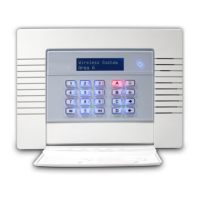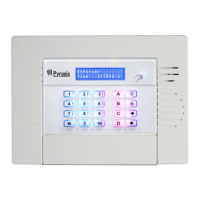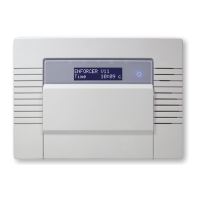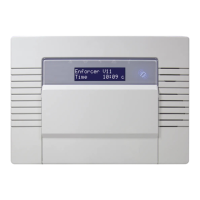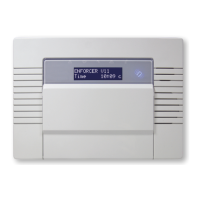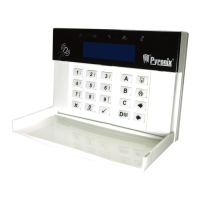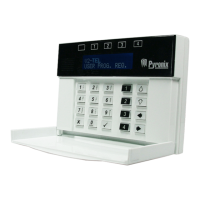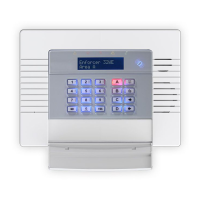Page: 12
is common to Area A and Area B.
Input 8 will only be active if the Area A and Area B are both armed. If one of them is disarmed the
input 8 will not be active either.
5.3.2 Input Attributes?
No Attribute Operation for both wired and wireless inputs
1 Chime When enabled the system loudspeaker(s) will ‘chime’ when an input is triggered
whilst the alarm panel is disarmed. Chime can be single – sounding once of follow –
sounding while the door is left open. NOTE: The chime can be turned On or Off in
disarmed mode by pressing [c] when all Entry Delay inputs are closed.
2 Allow
Bypass*
Enables the input to be manually bypassed during the arming procedure or from the
user menu whilst the panel is disarmed.
3 Double
Knock
If enabled, an alarm will be generated if this input is triggered twice within the pre-
programmed time window or if the input remains active for that period. The double
knock option does not work on ‘Follow’ input type.
4 Combined
Input
Alarm will only be generated if 2 inputs one next to the other with Combined Input
attribute have been activated at the same time. This option is very useful for setting
up out door perimeter protection.
5 Normally
Open
#
Both wired and wireless inputs are normally set to Normally Closed. This attribute
allows to set up the input as a Normally Open.
6 Mask Test The panel will not arm if the user does not activate each detector with this attribute
after starting the arming timer. This is a way to prevent arming the system with
masked or faulty detectors.
7 Non Activity
Input
This attribute works in conjunction with the NAT (Non Activity) timer. If a detector
has not been activated during the NAT time the NAT output if programmed will be
activated. An event will be registered in the log too.
8 Special Log
(SP)
Forces a log entry when the input is opened or closed, even when an alarm does not
result. May be selected to apply when a system is armed, when disarmed, or
always.
*Only the bypassing during the arming procedure is EN50131-1 approved
#
The use of this input attribute will make the system unable to comply to EN50131-1 Security Grade
2
5.3.3 Input Description?
2 text labels can be associated to each input:
Enter Number: This is commonly used to write the Input Number here: Input 1, Input 2 etc. This
label will show the event log, following alarms, reported in the SMS alarms as a reference point.
There are only 7 characters available for this label.
Enter Name: This is commonly used to write the location of the input. There are 14 characters
available for this label. Example: Input Number = Input 1; Input Name = Living Room. In case
there has been a tamper alarm on the input -on the SMS will be shown: ‘Input 2, Living Room,
Tamper Alarm’. On the display will be shown: 2-Living Room, Tamper on Input. Meaning: Tamper
alarm on input 2 that is the Living Room.
5.3.4 Manually Bypassing Inputs Procedure
Method 1: Whilst the system is arming, press the t key to bypass inputs.
Method 2: Enter user menu and from the “Bypass Inputs” option bypass the inputs required.
NOTE: Only Method 1 is EN50131-1 Grade 2 compatible. The input attribute “Allow Bypass” must
be enabled on each input that the user has the ability to bypass.
5.3.5 Automatic Bypassing Inputs Procedure
Inputs may be automatically bypassed when the panel auto re-arms if this option is enabled in the
system options.
